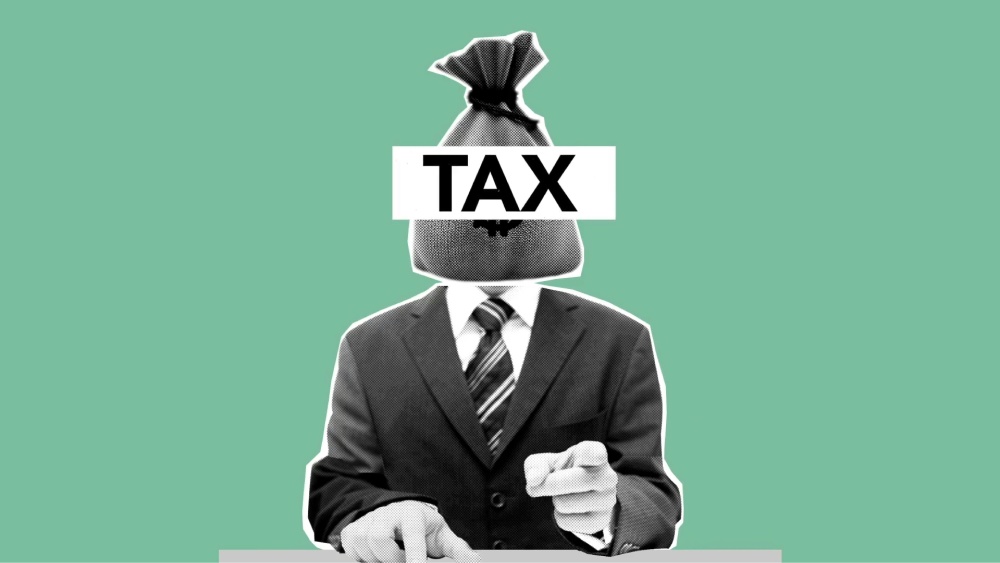Updated November 19, 2024
How Much is Sales Tax in Japan?
The sales tax system in Japan plays a vital role in both everyday purchases and business operations.
Whether you’re a consumer or a business owner, understanding how this tax is applied can help you better navigate the financial decisions you’ll make in Japan. For businesses, staying up to date with the latest tax regulations is critical for compliance and smooth operations.
In this post, we’ll explore Japan’s sales tax system, providing you with a clear understanding of how it works, what’s taxed, and how it might affect your budget and business decisions.
Plus, as the tax rate, exemptions, and special rules evolve over time, we’ll also take a look at the history of sales tax in Japan to understand why this tax exists.
Let’s get right to it.
How Much is Japan Sales Tax?
Japan’s sales tax, referred to as consumption tax, functions similarly to VAT or GST in other countries. This tax applies to most goods and services, providing a sufficient source of revenue for the government.
Currently, the consumption tax in Japan is divided into two distinct rates: a standard rate of 10% and a reduced rate of 8%.
The 10% rate is applied to most items, including alcohol, restaurant meals, and other general goods and services.
The reduced rate of 8%, on the other hand, covers essentials like:
Groceries
Non-alcoholic beverages
Certain newspaper subscriptions that are published more than twice a week
When shopping in Japan, it’s important to be aware of how prices are displayed. Some stores list prices excluding tax, indicated by "税抜" (zei-nuki), meaning an additional 8 or 10% consumption tax will be added to the final amount you will pay.
For example, a product listed as "¥1,000(税抜)" will have tax added on top of that amount at the register. Conversely, if the price is displayed with "税込" (zei-komi), the tax is already included, and you’ll play the exact amount shown.
So, the way prices are displayed is quite important, and you might have to get used to it if you’re from a place like Europe where prices always include the tax.
The History of Sales Tax in Japan
Japan’s consumption tax, introduced on April 1, 1989, was initially at just 3% under the then-Prime Minister Noboru Takeshita’s administration. This move aimed to finance social welfare spending amid an aging population during the economic boom of the Heisei era.
However, the tax faced public resistance, echoing earlier attempts to introduce a similar tax in 1979 and 1987, both of which were abandoned due to backlash. After the initial 3%, the first increase came in 1997, when the rate rose to 5%.
This hike was part of a broader effort to stabilize Japan’s finances at the time. It seems to have worked for quite a while because the 5% rate remained up until April 2014, when the administration at the time raised it to 8%. This was done, once again, to address the rising social security costs.
Following the developments in 2014, a planned increase to 10% was delayed twice due to political sensitivity, but this changed in 2019.
On October 1, 2019, the consumption tax reached 10%, with the government implementing a dual rate system for the first time. This is the 8% and 10% difference we’ve explored previously.
This final increase aimed to secure funds for social programs, including preschool education and support for low-income students, a collective societal investment for a better future.
Now that you know what the sales tax rate is and how it evolved over time, it’s time to talk about what this tax doesn’t apply to.

Goods and Services That Are Exempt From Sales Tax
Certain goods and services in Japan are exempt from consumption tax to support social activities and welfare. Here’s a sum up of what’s exempt from the sales tax.
Financial Services: Transfer of securities, such as government and corporate bonds, stocks, currency transfers, and money-exchanging services are not subject to tax. Additionally, interest in loans, insurance premiums, guarantee fees, and income from specific trust investments are also exempt.
Real Estate: The transfer or lease of land is tax-exempt, with the exception of short-term rentals. Likewise, leasing and renting residential buildings, such as houses or apartments, does not incur consumption tax.
Public Services: Activities related to public services, including international postal money orders and sales of postage or revenue stamps, aren’t taxed.
Medical and Welfare Services: Medical services covered by social insurance, welfare activities, home help services, and services related to childbirth and burial are exempt from tax. Welfare activities for the elderly and disabled also qualify for exemptions.
Education: School tuition and examination fees for institutions recognized under the School Education Act and other schools offering programs longer than one year with at least 680 hours of instruction annually are tax-free.
Virtual Currency: Transactions involving virtual currency, such as Bitcoin, are also tax-exempt.
These exemptions help reduce the financial burden on essential services, making them more accessible to the public while supporting social welfare. However, there’s another type of exception when it comes to sales tax, and that is “zero-rated goods and services.”
Exempt With Credit: Regarding Zero-Rated Goods and Services in Japan
In Japan, some transactions are treated as “exempt with credit,” meaning they do not incur consumption tax but still allow businesses to claim a tax credit on the inputs used.
This system is similar to zero-rated goods in other countries, helping businesses recover the consumption tax paid on inputs related to these transactions. These transactions include:
Exports and export-related services
International passenger and freight transportation
International communication services
Property transfers and rentals for export
Foreign goods transfers or rentals
Vessel, aircraft, and container transfer or charters for international use
Services related to handling, transporting, storing, or inspecting foreign freight
Harbor transportation and customs procedures
Licensing property to non-residents
Repairs and piloting services for aircraft and vessels
Services provided to non-residents (excluding domestic transportation, lodging, and meals)
The Future of Japan Sales Tax Rate
Having seen an increase twice in the same decade, the future of consumption tax in Japan is a subject of significant debate.
Japan’s aging population and increasing social welfare demands make further tax hikes a potential solution for addressing the national debt and sustaining public services. That said, this is a controversial statement, as the political consequences of such a move are quite complex.
Analyses by institutions like RIETI have highlighted the negative effects of past sales tax increases on household spending and consumption. After all, consumer spending is sensitive to even the smallest changes in the economy, and a significant sales tax hike could hinder economic recovery, particularly at times of less-than-ideal growth.
The lessons from previous hikes show that any future increases must be carefully considered to avoid a shock to domestic consumption. Currently, there are no confirmed plans for an increase, but this doesn’t necessarily indicate the likelihood or unlikelihood of another hike.
What’s more, the pressure of fiscal consolidation does suggest that Japan may eventually consider raising the rate. Policymakers are caught between managing the country’s substantial debt burden and the desire to protect economic stability.
All in all, the timing and possibility of a sales tax increase are closely tied to Japan’s economic condition and government priorities in the coming years.

Japan Sales Tax Percentage Compared to Other Countries
Now that you know how much is Japan sales tax and have a good understanding of the system, let’s see where this 10% rate stands globally.
For starters, it’s safe to say that Japan’s current sales tax rate of 10% is relatively moderate compared to other developed countries.
A brief look at Europe's more developed countries shows that the value-added tax (VAT) rates are often higher in the continent. For instance, Germany’s standard VAT rate is 19% (with a reduced rate of 7% like Japan's), while the United Kingdom has 20% VAT.
Similarly, France’s VAT stands at 20%, reflecting the trend in the European Union to maintain higher rates to support extensive social welfare programs.
The complete polar opposite of Europe in this aspect is the United States. This is mainly due to the country not having a nationwide sales tax. Instead, individual states impose their own sales tax rates, which can vary widely, with some even having no sales tax. Still, they typically range from 0% to 10%. This decentralized system contrasts Japan’s uniform national rate.
In the Asia-Pacific region, Japan’s rate is comparable to that of some neighboring countries and lower than that of others. For example, South Korea has a VAT rate of 10%, and Australia has a goods and services tax (GST) of 10%, whereas New Zealand has a GST rate of a whopping 15% and China has a standard rate of 13%.
Considering the above rates, Japan’s 10% rate is on the lower end, especially compared to Western countries. However, if fiscal pressure remains, future changes might bring it more in line with higher international standards.
Conclusion on Japan Sales Tax: How Much Are Sales Taxes in Japan?

With its dual rates of 10% and 8%, along with various exemptions we discussed, Japan’s VAT system is quite moderate compared to other developed nations. However, its history of gradual increases and the ongoing debate around further hikes expose the true complexities of maintaining economic stability.
So, as the government eventually addresses its financial challenges in the coming years, it’s important to be prepared for possible rate adjustments.
While this is all we have on Japan’s sales tax percentages, you can read more on how to file for taxes yourself in our guide to conquering the year-end tax adjustments in Japan as a foreigner.
Also, if you have trouble navigating your finances in Japan and need accounting advice, my accounting in Japan guide includes plenty of good recommendations.
Get Job Alerts
Sign up for our newsletter to get hand-picked tech jobs in Japan – straight to your inbox.







